Multan, also known as the ‘City of Saints’, is a city located in Punjab near the Chenab River. It is a significant economic and cultural hub of southern Punjab and is also among the ten largest cities in Pakistan. Steeped in history due to being one of the oldest cities in the Asian subcontinent, there is much to do and a lot of places to visit in Multan. We’ll be covering the city from a tourist’s perspective and will make it easier for you to reach the city and the best things to do in Multan once you’re there. Let’s begin this travel guide to Multan with a little introduction to the mysterious and ancient city.
About Multan
The old walled city of Multan was once the site of the historic Multan Sun Temple and was also laid under siege by Alexander the Great in early 300 BC. The 11th and 12th centuries then saw a number of Sufis and saints coming to the city, as it was a trading centre and melting pot of various religions. Modern-day Multan became a major settlement after the conquest of Muhammad Bin Qasim in 712 AD.
This is why there are a lot of historic sites and religious shrines located in Multan, where travellers from all over the country come to pay their respects to these Sufis. The old walled city was once built like a fort, near the river, but Multan lost its fort at the hands of the British in the 1800s. Nevertheless, Multani architecture has its own distinct style that sets it apart from other monuments in Pakistan. Since the city’s climate swings between incredibly hot summers and mild winters, travellers are advised to visit Multan between October to March, unless they plan on explicitly braving the scorching heat of the city during the remaining months.
Reaching Multan
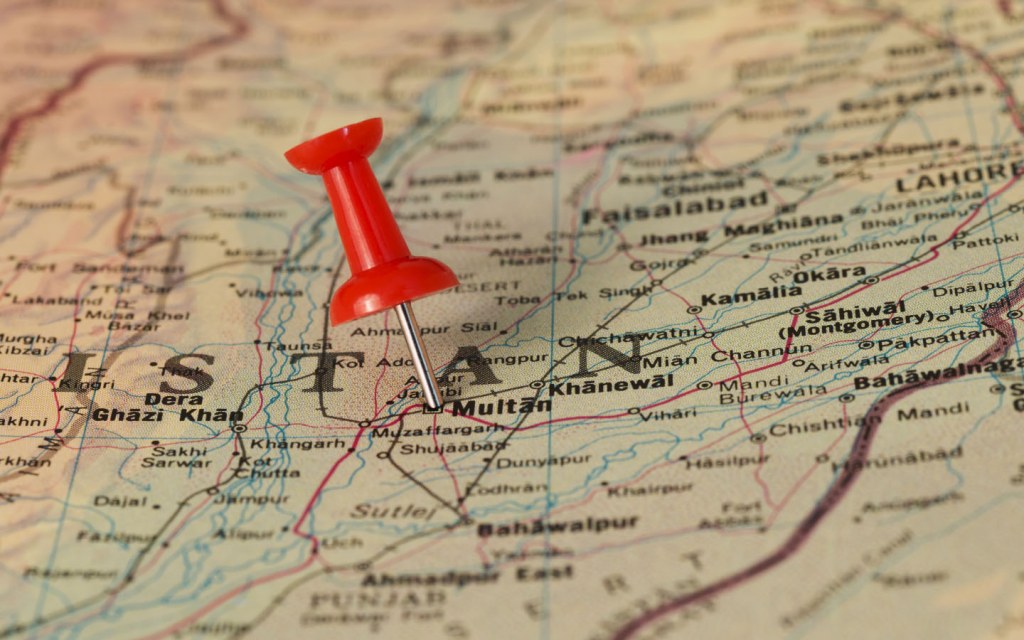
You can travel to Multan by plane, train, bus, or car, depending on your itinerary and how soon you want to be in the city. A quick flight of 1.5 hours can bring you to Multan International Airport from Karachi or Islamabad, while you can also enjoy a train ride to Multan Cantt Station from any of the major cities in the country. You can also get to Multan using the Daewoo Bus Service that runs across the country or take the N-5 National Highway that connects Multan to other cities in Pakistan.
Travelling within Multan
This is the best time to visit Multan as the city recently witnessed major repair work and extension of all its major arteries. You can drive around in your car or get a ticket and hop aboard the Multan Metro Bus, which is a bus rapid transit system, connecting all the key areas of town with the help of Feeder Buses. Traditional rickshaws and taxis are also abundantly available, and if all else fails and you need a quick means of commuting around town, then you can also rely on app-based ride-sharing services for a comfortable commute.
Places to Visit in Multan
There are several historical places to visit in Multan, and you will need around 2 to 3 days to visit them all. As part of our travel guide to Multan, we’re sharing some of the most significant sites that you should not miss:
Ruins of Fort Kohna
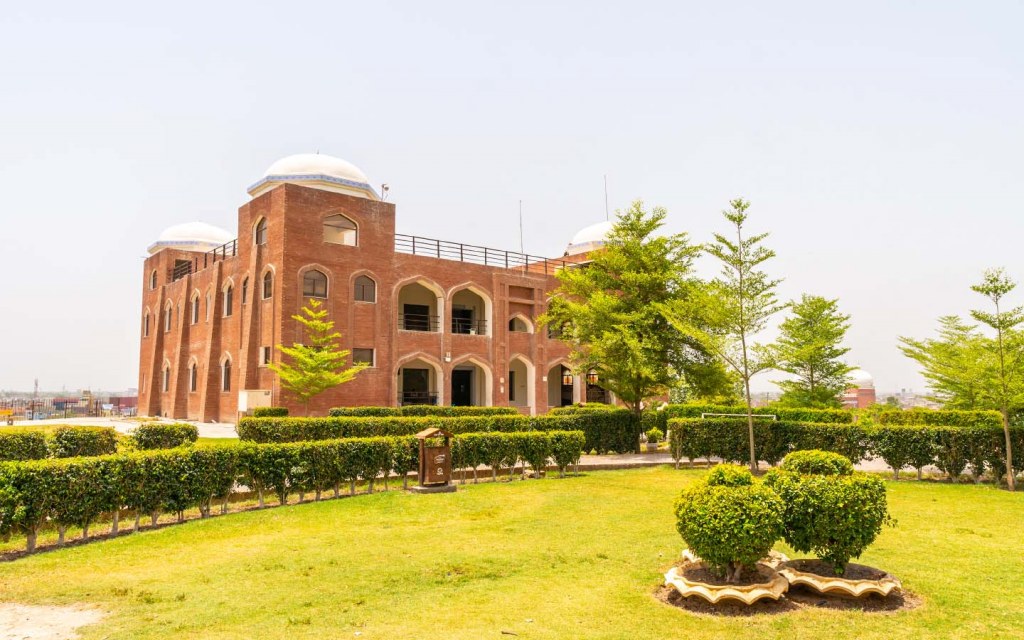
Built atop a hill in the middle of the city nearly 2,500 years ago, Fort Kohna was a citadel in Multan that contained 46 bastions and 4 entrance gates, namely Hareiri Gate, Sikki Gate, Khizri Gate, and Qasim Gate, out of which, only the last one remains standing today. The fort was severely damaged during the Sikh Rule and was entirely demolished during the British Rule in the 1800s. Today, the fort’s site is surrounded by Qasim Park, entered by the original Qasim Gate, which contains a small cricket stadium as well as the fairly well known memorial obelisk honouring the death of Lieutenant Alexander vans Agnew.
Clock Tower of Multan
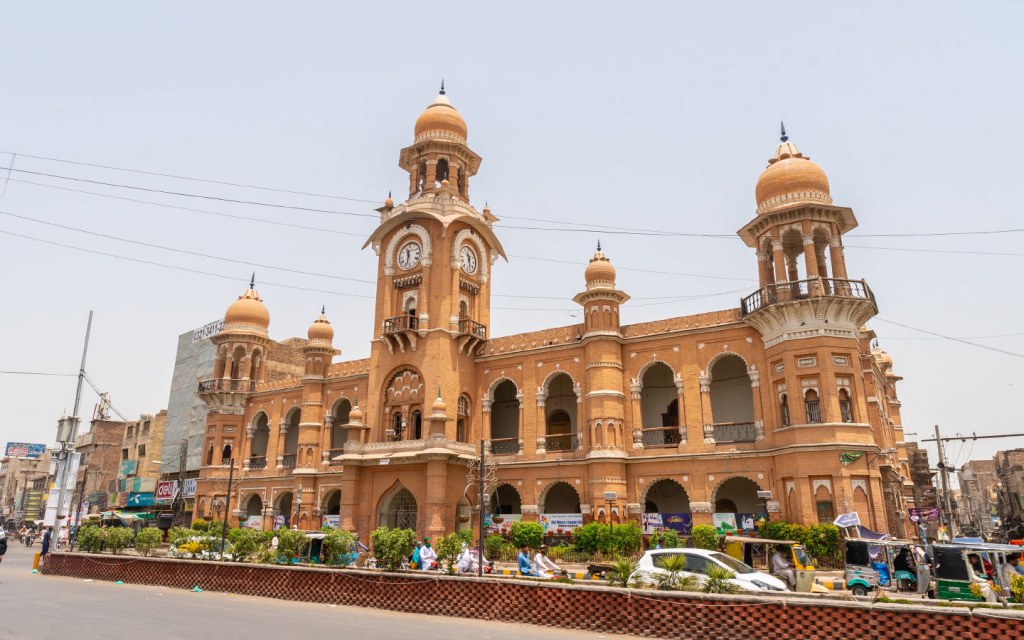
Multan’s city centre is home to a Clock Tower or Ghanta Ghar, which was built in the late 1800s during the British rule. While the building was being used as a government office earlier on, the offices were shifted due to a shortage of space. Currently, the structure is being renovated to become the new premises for the Multan Museum, which contains a large collection of coins, stamps, paintings, medals, documents, and other artefacts from the city’s Islamic and Pre-Islamic periods.
Shrine of Syed Shah Yousaf Gardezi
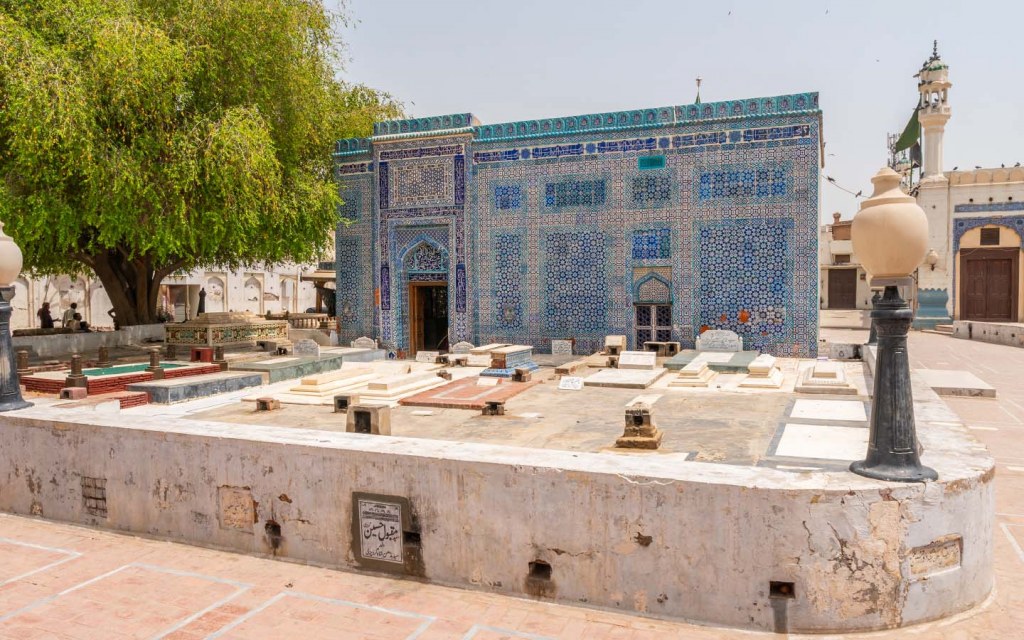
Considered the founder of Modern Multan due to his restoration of the city upon his arrival in the early 1000s, Syed Shah Yousaf Gardezi is buried at the southwest outskirts of the city. His beautiful shrine is decorated with blue tiles, which are typical of Multani architecture.
Shrine of Bahauddin Zakariya
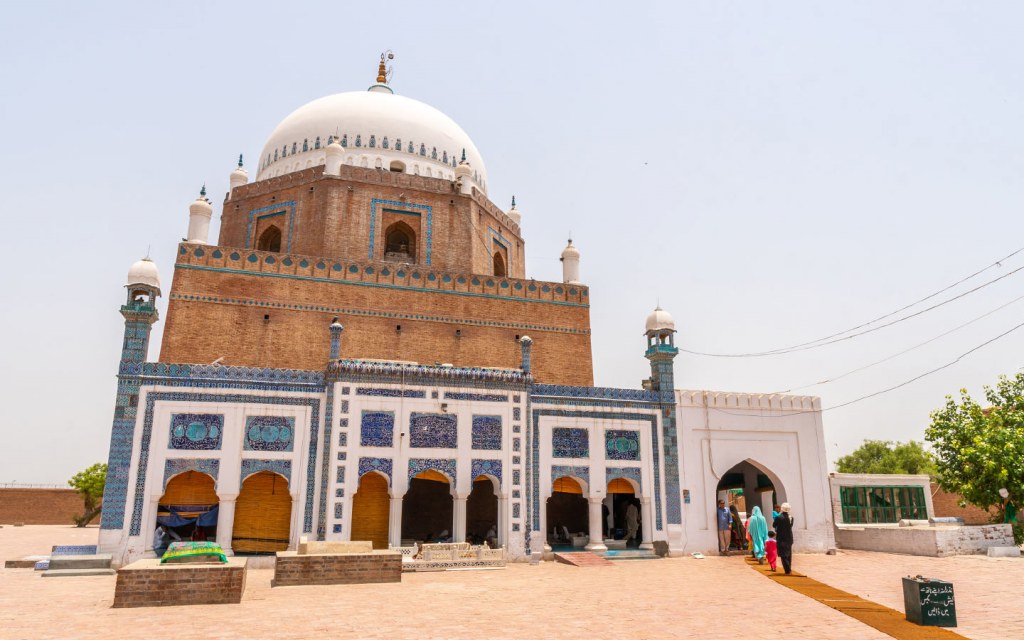
Becoming the prototype for the distinct architectural style followed for many of the later shrines in Multan, the shrine of Bahauddin Zakariya is located on a hill in Multan and was one of the very first to be decorated with the signature blue Multani tilework. Bahauddin Zakariya was a Sufi saint, scholar, and a poet, and people from all over the country visit his shrine at his urs. The tomb was actually built in 1262, about 6 years before the death of the saint. The square base of the monument covers about 52 feet, above which is another tier octagonal in shape and half the height of the square. This octagonal landing is covered by a white dome that can be seen from a distance, and a large courtyard surrounds the shrine, where several of Bahauddin Zakariya’s followers have also been buried.
Shrine of Shah Rukn-e-Alam
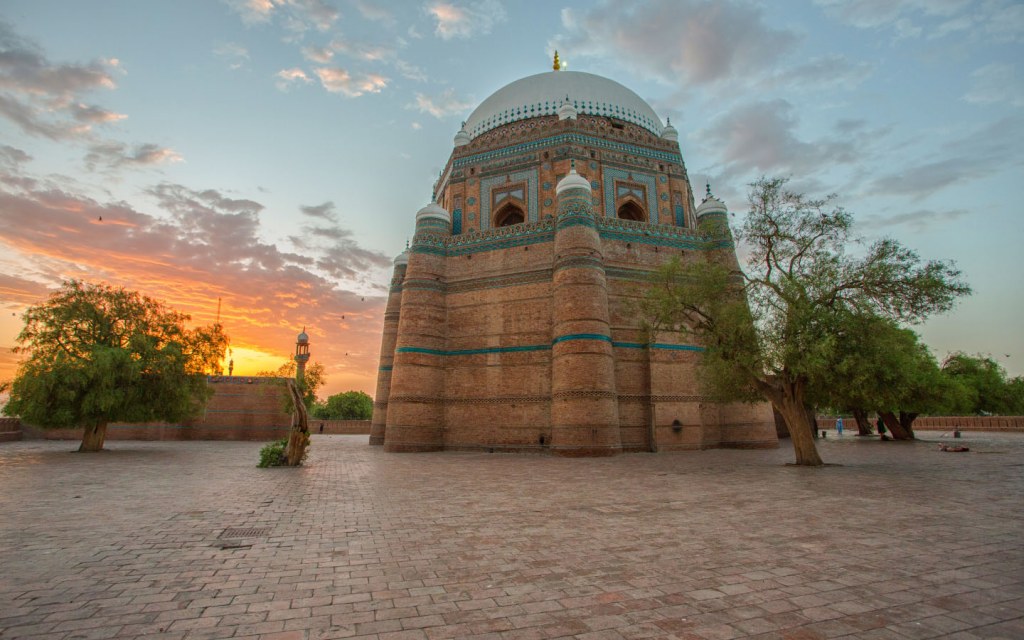
Shah Rukn-e-Alam was the grandson and successor of Bahauddin Zakariya. While he had initially been buried alongside his grandfather, the current shrine was built by Ghiyas-ud-din Tughlaq and gifted to Multan by his son Mohammad bin Tughlaq for the saint’s burial at a later date. The tomb serves as a noteworthy monument depicting Pre-Mughal architecture, with heavy influences from Persian and Central Asian architectural styles, including the use of glazed tiles and wooden roofs.
Shrine of Shah Shams Sabzwari Tabriz
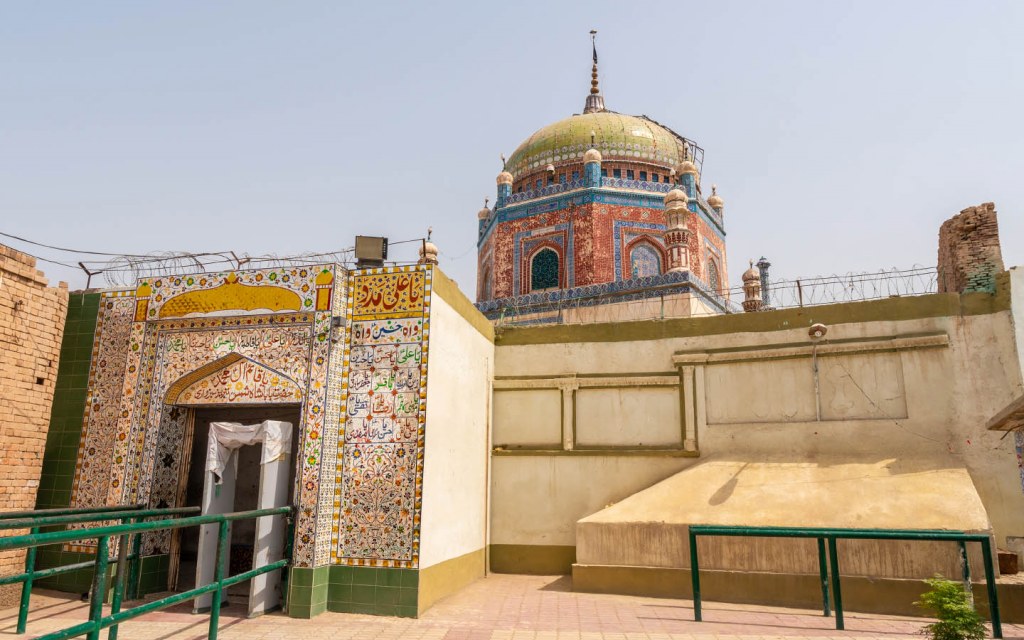
Arriving in Multan in the 1100s, Shah Shams Sabzwari Tabriz was a holy saint who preached the message of humanity, respect, and peace. Passing away in 1276, the saint was buried near the River Ravi but no tomb was erected at the time. The tomb was actually built nearly 54 years after his death by his grandson with a sense of simplicity that paid tribute to his grandfather, with a green dome and an exterior decorated with glassy tiles. Today, people from all over Pakistan travel to Multan from the 14th to the 16th of Rabi-us-Sani and in the 1st week of June to celebrate his urs and pay their tributes to him.
The crowd attracted to the tomb also enjoys a day in the Shah Shams Park nearby named after the holy saint where a children’s playground, boating, and amusement rides, entertain both adults and children alike. Small tuck shops also sell hot and cold beverages as well as snacks for those random hunger cravings.
Things to Do in Multan
Aside from taking in the sights, there are plenty of other things to do in Multan. Some of the top activities to make the most of your time in the city include:
Watching a Game of Cricket
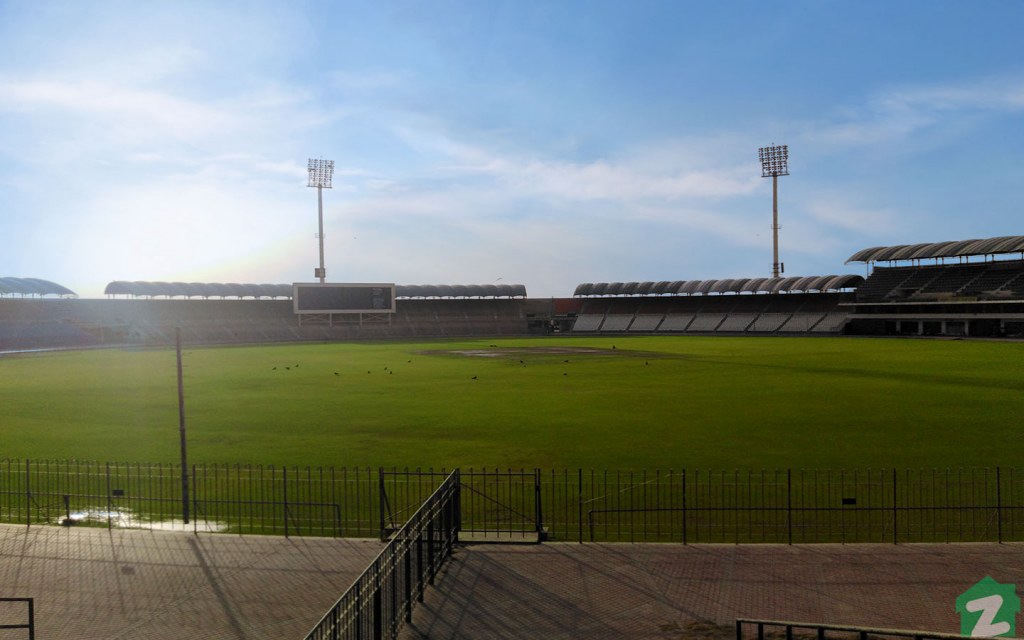
The recent renovations have made Multan Cricket Stadium one of the largest in Pakistan, with a seating capacity of 35,000. Head to the stadium if you’re a cricket fan as there are often practice games and amateur tournaments being played around the year.
Shopping at Hussain Agahi Bazaar
Hussain Agahi is an all-in-one bazaar that is a haven for handicraft lovers. You can get everything from electronics and local textiles to carpets, spices, pottery, and have a taste of local delicacies here. The bazaar is spread over several levels while bargaining is a must to get a good deal.
Taking Some Souvenirs Home
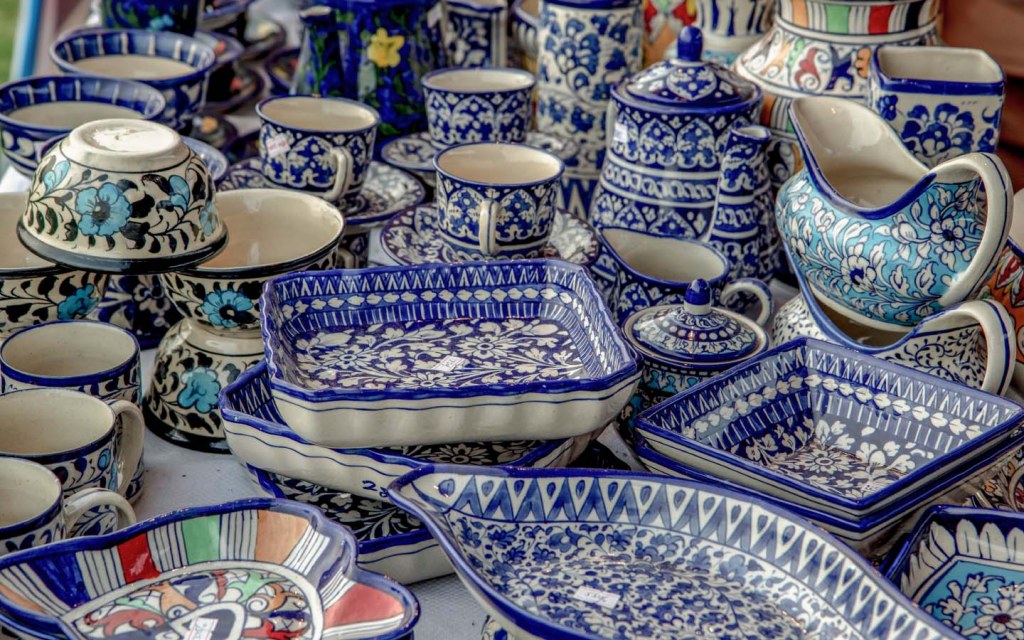
Multan is a cultural hub with several handicrafts that are known for their Multani origin. This includes the blue tiles that decorate so many of the shrines in town. Local craftsmen create pottery using these same blue tiles, and you can take back a unique vase or pot as a reminder of your trip. Another famous souvenir of Multan is Multani Mitti, a locally excavated clay that is known for its anti-acne properties. Multani Sohan Halwa is another speciality of the region that you should take back home for family and friends at the end of your visit to Multan.
This travel guide to Multan covers all the best sights and sounds of the city that you should explore on your next trip. You can also visit Harappa and Uch Sharif nearby if you’re staying in the city for a longer duration. Two other cities to visit in Punjab include Sialkot, which is also the home of the National Poet, Allama Muhammad Iqbal, and Jhelum, the ‘City of Soldiers’. Stay tuned to Zameen Blog for more tourism posts and reach us blog@zameen.com with any queries or suggestions that you might have.



